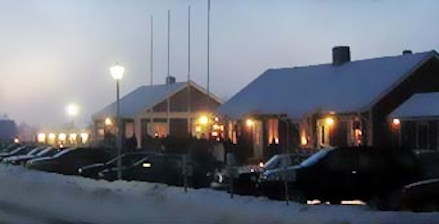When we think of heating systems it is logical to assume that the larger the building, the larger the boiler required to heat it. Most of us have seen the large central boiler systems employed in factories, commercial buildings or distributing heating to a campus. Some may have two boilers (or more) to assure continuity of service in an expanding campus as well.
It is no secret that the larger a boiler, the less efficient it is both thermodynamically and in seasonal operational efficiency. The efficiency spread between smaller and larger boilers has expanded in recent years to the point that our old and seemingly logical thinking has become fundamentally flawed.
To develop this argument let us use a “two are better than one” scenario. (This can be extended to larger multiples as well, and applies to both gas and oil fired systems.)
Firstly, all assumptions are predicated on the common denominator of structure heat loss (demand), not the size of the current boiler and its performance. Therefore the firing rate or capacity of your current boiler cannot be used for sizing comparisons. You must determine the actual heating requirement by using a “Heat Loss Calculator” of which several are available online.
Furthermore, to arrive at a standard “Cost per Million BTU” for a particular fuel refer to our posting entitled “Using a Heat Cost Calculator — Carefully”. This will give you an accurate method of both selecting and applying values in the current environment. Note that the heat content of fuels and their burning efficiencies vary and thus must be considered in any comparison.
For our purpose we are assuming the published Annual Fuel Utilization Efficiencies (AFUE) of 87% and 93% respectively of top end Weil McLain Ultra Oil and Ultra Gas products. These generally compare favorably with other competitive manufacturer product offerings and are the bases of our scenario.
These modern, high efficiency heating appliances are limited technologically to sizing in the medium home to light commercial (and also the higher volume) market. They also vary significantly cost-wise by fuel utilized. To be more specific: 1. The highest capacity of an 87% Ultra Oil Model nets at 172,000 BTUH 2. The highest capacity of a 93% Ultra Gas Model nets at 289,000 BTUH 3. The cost of Gas Models is significantly higher, offsetting some efficiency advantage.
Where is the break point between a single, larger, less efficient boiler and two, smaller, more efficient ones? This is dependent upon the specifics of an application, but some general guidelines can be applied. It is generally accepted that about 70% of seasonal heating demand can be handled by one boiler of the duet. The second one is there to fulfill those peak, paralleled winter demands. A good exploration starting point is if your heating demand is around 200,000 BTUH. Having additional demands such as Domestic Hot Water (DHW) generation, pool heating, etc. factor into the determination as well. Depending upon their quantitative and cyclical demand values they will lower the threshold between the size, number and possible dedication of boilers. Installation costs over single boilers will be somewhat higher, to be offset by efficiency gains.
Historically the impact of Multiple Boiler Systems (MBS) can be dramatic. Common fuel usage drops of 40% are quoted in follow up reports. Their popularity in large commercial installations such as resorts, high-rise buildings and process installations are reflected in trade journals.
Beyond the efficiency claims of MBS, particularly in peak efficiencies and seasonal standby losses, there are the additional benefits of alternating boiler usage (called exercising), automatic backup for failures, increased boiler life and reduced maintenance.
For an analysis of your particular application, consult with an experienced heating engineer.
